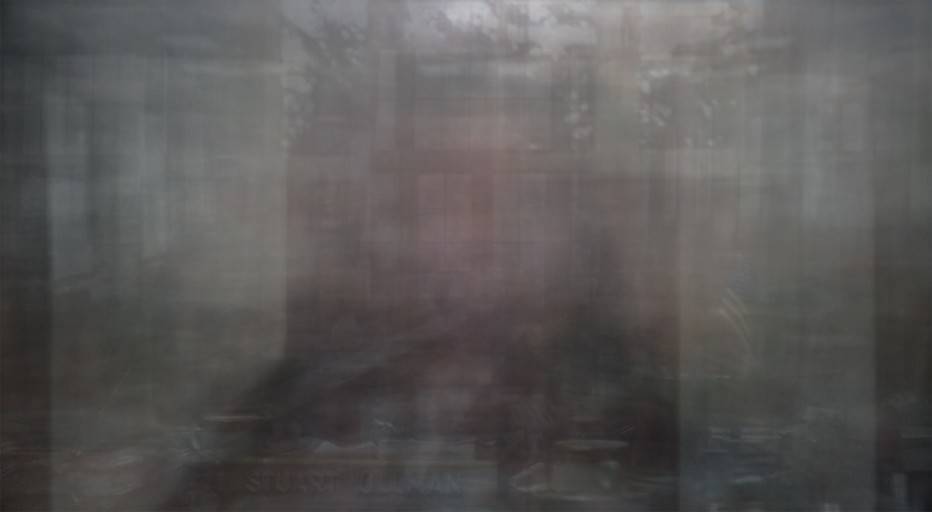IF YOU WATCH Stanley Kubrick’s 2001: A Space Odyssey, you’ll see 161 minutes of Keir Dullea drifting, often alone, through Discovery One. This clearly defined visual narrative painted an intriguing, and accurate, portrait of the future. But if you look at the film as it appears in Jason Shulman‘s series Photographs of Film, the narrative fades away. The movie is, instead, one scratchy, hazy frame. It’s mostly black and gray, but you can make out the three screens of the council room, the tiled floor of the Louis XVI bedroom, and HAL 9000’s camera eye, glowing like an ember.
Shulman’s series features long-exposure photographs of entire movies, flattening them into a single image. Yellow Submarine is a psychedelic swirl of purple, yellow, blue, and green. Duel, Steven Spielberg’s 1971 road-trip thriller, is a teal-blue sky over the burnt orange fog of the protagonist’s Plymouth Valiant. The Shining is mostly a close-up of a blurred face peering through doors.
Shulman lives and works in London, and typically creates sculptures. During the Sochi 2014 Winter Olympics he decided to test an idea he had about photography, which basically involved shooting the Games without going to Russia. He trained a camera on his television and took long exposure photos of athletes in motion. Most of the events he recorded were brief, leading him to wonder what might happen if he shot longer stretches of action.
The results surprised him. “I assumed that the result would be like mixing lots of different-colored balls of Plasticine”—a kind of modeling clay—“together into one big ball, i.e. a brown mush.” Instead, he found what he calls a “subtle translation” and “photographic gestalt” of the films. Shulman won’t share many details about his process, but says he photographs the films “off a very, very high resolution monitor with a very big camera.”
Photographs of Film does a nice job of illuminating technological trends throughout cinematic history. Georges Méliès’s Voyage de la Lune is the oldest movie Shulman shot, and in 1902 cameras couldn’t move as much as they do now. It’s the sharpest image in his series, photos of more recent films are far blurrier. Filmmakers’ styles surface, as well. “Blurred human figures emerge in the Hitchcock films, whereas what stands out in the photographs of the Kubrick [film]s is symmetry, or some kind of formal composition,” Shulman says. “I don’t know if you can really draw conclusions from this, but to me it says that Hitchcock is all about character, whereas Kubrick was preoccupied with structure.”








